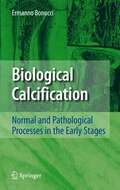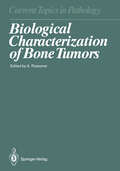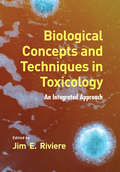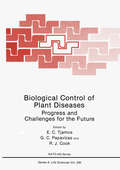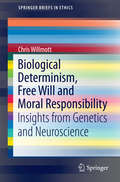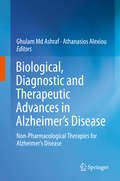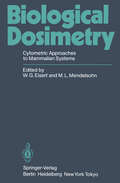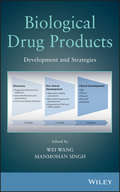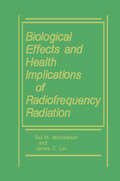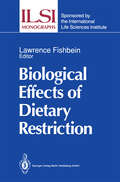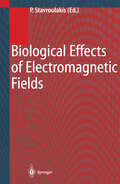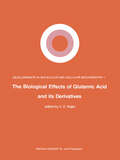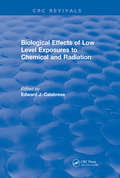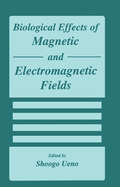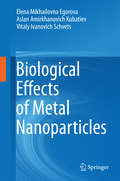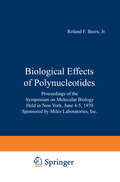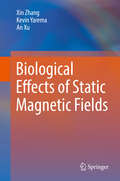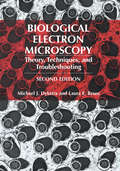- Table View
- List View
Biological Calcification: Normal and Pathological Processes in the Early Stages
by Ermanno BonucciFor the first time, this book offers a critical review of the calcification process of the organic and inorganic phases of mineralized tissues focusing on the earliest phases. It includes a methodological chapter which provides the necessary practical information for making appropriate choices. The book is set to become an important reference source for the shelves of bone densitometry labs across the world.
Biological Characterization of Bone Tumors (Current Topics in Pathology #80)
by J. Althoff D.B.v. Bassewitz A. Bosse V. Bouropoulou J. J. Brooks W. Dierschauer G. Edel E. Grundmann A. Härle W. Hiddemann H. J. Höhling N. Jiang G. Jundt M. Kolve V. A. LiVolsi W. Mellin P. Quint A. Roessner A. Schulz F. Sim C. Sorg T. Spelsberg G. C. Steiner J. Q. Tojanowski E. Vollmer L. E. Wold P. Wuisman G. ZwadloDuring the past few years, a considerable number of monographs on bone tumors have been published. They are mainly restricted to bone tumors as clinical-pathological entities, since their diagnosis, more than that of other tumors, requires the interdisciplinary cooperation between orthopedic specialist, radiologist, and pathologist. However, investiga tions concerning the histogenesis of bone tumors are rather limited, although they might be helpful in explaining the unique morphological heterogeneity of tumors of the skeletal system. Furthermore, the histo genetic approach in the study of bone tumors may facilitate the inter pretation of the advanced cytobiological methods available for improv ing classification and diagnosis. Therefore, this volume presents recent pathological advances in the biological characterization of bone tumors. A major chapter deals with the differential diagnosis of Ewing's sarcoma as regards its demarcation from the so-called neuroectodermal tumor of bone. The analysis of the ground substances in bone-forming tumors may be helpful for their classification. Therefore the volume includes a chapter on the biochemical and histochemical analysis of different osteosarcoma types. Recently it has become clear that in addition to different collagen types which are not specific for bone tissue, several bone-specific proteins occur, one of which is osteonectin. Its distribu tion is obviously important for the classification and diagnosis of osteo blastic tumors. Proliferative behavior is of major importance for the diagnosis of malignant tumors.
Biological, Chemical, and Radiological Terrorism: Emergency Preparedness and Response for the Primary Care Physician
by Alan MelnickOffering in-depth coverage of biologic, chemical, and radiologic agents, this timely book helps family physicians understand their role in preparing for and responding to terrorist events. The text considers the physical and psychological impact on providers and patients who are directly affected as well as spillover effects. It also examines the structure, function, and planning efforts of the public health system at the local, state, and federal levels. Emphasis is placed on how physicians can work with health officials on the delivery of preventive and therapeutic measures.
Biological Concepts and Techniques in Toxicology: An Integrated Approach
by Jim E. RiviereHighlighting the latest advances in molecular biology, mathematical modeling, quantitative risk assessment, and biopharmaceutical development, this reference presents how current scientific applications and methods impact and revolutionize mainstream toxicological research. Presenting findings from disciplines that will impact the future of toxicol
Biological Control of Plant Diseases: Progress and Challenges for the Future (Nato Science Series A: #230)
by E. C. Tjamos G. C. Papavizas R. J. CookThe papers contained in this book were presented at a NATO Advanced Research Workshop (ARW) held at Cape Sounion, Athens, Greece, 19-24 May, 1991. The twenty-eight more comprehensive papers represent the key subjects of the ARW covered by invited speakers. The thirty-four short papers pre sented in a research format are contributions of those invited to participate in the ARW. There was a total of 70 participants from 21 countries. The objectives of the ARW were as follows: to review current knowledge of biological control of plant diseases and plant parasitic nematodes, with emphasis on mechanisms at the molecular, cellular, organismal, and ecosystem level; to examine and expand on current concepts and synthesize new concepts; to identify and prioritize limitations in the use of biological control for plant diseases and nematodes and the scientific research needed to overcome these limitations; and to develop strategies for biological control through management of resident agents or introduction of natural or modified agents.
Biological Council Symposium on Drug Action: Peptide Hormones (pdf) (Biological Council Symposia on Drug Action)
by John Anthony ParsonsBiological Determinism, Free Will and Moral Responsibility: Insights from Genetics and Neuroscience (SpringerBriefs in Ethics)
by Chris WillmottThis book examines the way in which new discoveries about genetic and neuroscience are influencing our understanding of human behaviour. As scientists unravel more about the ways in which genes and the environment work together to shape the development of our brains, their studies have importance beyond the narrow confines of the laboratory. This emerging knowledge has implications for our notions of morality and criminal responsibility. The extent to which “biological determinism” can be used as an explanation for our behaviour is of interest to philosophers reflecting on the free will versus determinism debate. It also has repercussions for the criminal justice system; in courtrooms around the world, defence lawyers are beginning to appeal to genetic and brain imaging data as grounds for finding their clients not guilty. Can a defendant’s genes or the structure of his brain be used as an excuse for his behaviour? Is criminality “hardwired”? Is it legitimate to claim “I couldn’t help it, my genes made me do it”? This book appeals to anyone interested in the link between behaviour and genetics, the science and philosophy of moral responsibility and/or criminal law.
Biological, Diagnostic and Therapeutic Advances in Alzheimer's Disease: Non-Pharmacological Therapies for Alzheimer's Disease
by Ghulam Md Ashraf Athanasios AlexiouThis book discusses the latest research into the highly prevalent neurodevelopmental disease most commonly associated with aging: Alzheimer’s disease (AD). Even after years of research, Alzheimer’s disease is still far from being cured. It presents a range of common symptoms in the form of behavioral and cognitive impairments. This book describes the symptoms and the biology behind them. The contents covers latest findings on the genetics involved and various factors and pathways influencing disease development. It also covers various non-pharmacological therapies like immunotherapy, use of natural products, and employing nanotechnology in both the detection and treatment of AD. This book also highlights the role of diet and nutrition in healthy aging. Given its scope, it offers a valuable asset for researchers and clinicians alike.
Biological Dosimetry: Cytometric Approaches to Mammalian Systems
by W. G. Eisert M. L. MendelsohnIn October 1982, a small international symposium was held at the Gesellschaft fUr Strahlen- und Umweltforschung mbH (GSF) in Munich as a satellite meeting of the IX International Conference on Analytical Cytology. The symposium focussed on cytometric approaches to biological dosimetry, and was, to the best of our knowledge, the first meeting on this subject ever held. There was strong encouragement from the 75 attendees and from others to publish a proceedings of the symposium. Hence this book, containing 30 of the 36 presentations, has been assembled. Dosimetry, the accurate and systematic determination of doses, usually refers to grams of substance administered or rads of ionization or some such measure of exposure of a patient, a victim or an experimental system. The term also can be used to describe the quantity of an ultimate, active agent as delivered to the appropriate target material within a biological system. Thus, for mutagens, one can speak of DNA dosimetry, meaning the number of adducts produced in the DNA of target cells such as bone-mar row stem cells or spermatogonia.
Biological Drug Products: Development and Strategies
by Wei Wang Manmohan SinghTested and proven solutions to the challenges of biological drug product development Biological drug products play a central role in combating human diseases; however, developing new successful biological drugs presents many challenges, including labor intensive production processes, tighter regulatory controls, and increased market competition. This book reviews the current state of the science, offering readers a single resource that sets forth the fundamentals as well as tested and proven development strategies for biological drugs. Moreover, the book prepares readers for the challenges that typically arise during drug development, offering straightforward solutions to improve their ability to pass through all the regulatory hurdles and deliver new drug products to the market. Biological Drug Products begins with general considerations for the development of any biological drug product and then explores the strategies and challenges involved in the development of specific types of biologics. Divided into five parts, the book examines: Part 1: General Aspects Part 2: Proteins and Peptides Part 3: Vaccines Part 4: Novel Biologics Part 5: Product Administration/Delivery Each chapter has been prepared by one or more leading experts in biological drug development. Contributions are based on a comprehensive review and analysis of the current literature as well as the authors' first-hand experience developing and testing new drugs. References at the end of each chapter serve as a gateway to original research papers and reviews in the field. By incorporating lessons learned and future directions for research, Biological Drug Products enables pharmaceutical scientists and students to improve their success rate in developing new biologics to treat a broad range of human diseases.
Biological Drug Products: Development and Strategies
by Wei Wang Manmohan SinghTested and proven solutions to the challenges of biological drug product development Biological drug products play a central role in combating human diseases; however, developing new successful biological drugs presents many challenges, including labor intensive production processes, tighter regulatory controls, and increased market competition. This book reviews the current state of the science, offering readers a single resource that sets forth the fundamentals as well as tested and proven development strategies for biological drugs. Moreover, the book prepares readers for the challenges that typically arise during drug development, offering straightforward solutions to improve their ability to pass through all the regulatory hurdles and deliver new drug products to the market. Biological Drug Products begins with general considerations for the development of any biological drug product and then explores the strategies and challenges involved in the development of specific types of biologics. Divided into five parts, the book examines: Part 1: General Aspects Part 2: Proteins and Peptides Part 3: Vaccines Part 4: Novel Biologics Part 5: Product Administration/Delivery Each chapter has been prepared by one or more leading experts in biological drug development. Contributions are based on a comprehensive review and analysis of the current literature as well as the authors' first-hand experience developing and testing new drugs. References at the end of each chapter serve as a gateway to original research papers and reviews in the field. By incorporating lessons learned and future directions for research, Biological Drug Products enables pharmaceutical scientists and students to improve their success rate in developing new biologics to treat a broad range of human diseases.
Biological Effects and Health Implications of Radiofrequency Radiation
by James C. Lin Sol M. MichaelsonThe study of electromagnetic bioeffects is multidisciplinary; it draws heavily from the disciplines of physics, engineering, mathematics, biol ogy, chemistry, medicine, and environmental health. This book is about these disciplines and how they mutually integrate in the study of electromagnetic pathophysiology. Over aperiod of years, the authors have become increasingly aware of the difficulty in locating information concerning interaction of electro magnetic energy and biological tissues. There are numerous reports and publications, but no single comprehensive source in the American literature where such information is readily accessible. Regrettably, much of the importantinformation is contained in government documents and reports, some of which are inaccessible, or spread through many diverse journals, making retrieval and analysis of the material difficult. Although this book is primarily clinically oriented, it also focuses on those biophysical, biochemical, and fundamental molecular studies and findings that provide the basis for understanding the presence or absence of pathophysiological manifestations of exposure to radiofrequency, including microwave, energies. Detailed discussion and analysis of the relevant comprehensive physics, engineering, and biophysics are con tained in Chapters 2-5. Because the treatment is multidisciplinary, wherever possible analy sis is begun with basic background information that may appear elementary to some readers but is essential to understanding for those from a different discipline. Most confusion and controversies that exist in the field today arise from individuals of one discipline not appreciating basic facts or theories from another.
Biological Effects of 224Ra: Benefit and Risk of Therapeutic Application Proceedings of the Second Symposium at Neuherberg/München, September 20–21, 1976
by W. A. MüllerBiological Effects of Alcohol: (pdf) (Advances in Experimental Medicine and Biology #126)
by Henri BegleiterBiological Effects of Dietary Restriction (ILSI Monographs)
by Lawrence FishbeinHow does dietary restriction affect the physiological and biochemical state of laboratory animals? How will the present conclusions affect further research? What are the implications for human health and safety assessment? These are the main questions asked in this book by leading international researchers. After a first look at feeding regimens and diets of laboratory animals, the book elaborates on a variety of age-associated toxicological and pathological endpoints including tumor development. The following sections detail the underlying mechanisms which may induce the broad spectrum of physiological and biochemical changes. This summary of current multidisciplinary research will enhance understanding of the practical applications and implications of dietary restriction.
Biological Effects of Electromagnetic Fields: Mechanisms, Modeling, Biological Effects, Therapeutic Effects, International Standards, Exposure Criteria
by Peter StavroulakisReporting new results, this book covers the subject of biological effects of EMF in its entirety. Experimental verification of the theoretical results is given when at all possible, and the book is expected to open new areas of research, providing material for university course creation.
Biological Effects of Fibrous and Particulate Substances (Current Topics in Environmental Health and Preventive Medicine #0)
by Takemi OtsukiThis volume examines our current understanding of the biological effects of fibrous and particulate substances, including discussions on nanoparticles. It offers comprehensive information on the latest insights into the immunological effects of various irritants on the human body. Readers will benefit from the contributing authors’ diverse perspectives and extensive discussions of key issues, which include molecular alterations of the immune system and autoimmune diseases in connection with asbestos and silica, among others. The chapters also discuss recommendations, practical methods, and nanosafety science in situations involving exposure to nanotoxic substances. Edited in collaboration with the Japanese Society for Hygiene, this book provides up-to-date information on the immunological effects of nanotoxic substances to researchers interested in environmental and occupational health. Presenting a number of recent concepts and findings in the field, it enables readers to gain a comprehensive knowledge of health problems caused by environmental fibrous and particulate substances.
The Biological Effects of Glutamic Acid and Its Derivatives (Developments in Molecular and Cellular Biochemistry #1)
by V. A. Najjarthe GABA increase takes place and (2) the area of the brain that may mediate the anticonvulsant Investigation of the physiology, biochemistry, activity. Three compounds that increase brain pharmacology and anatomy of GAB A and GABA GABA by distinct mechanisms were used in these containing neural systems, continues to reveal the studies: di-n-propylacetate (DPA, sodium val rich complexities associated with this neuroactive proate, Depakene(R)), amino-oxyacetic acid amino acid (see recent symposia 1,2,3). Advances (AOAA) and y-vinyl GABA (GVG). in the pharmacology of GABA-mimetic agents In the next sections, the metabolism of GABA have resulted in the development of compounds and a brief historical account of the relationship that can selectively activate GABA receptors (4,5, between GABA and anticonvulsant activity are 6, 7), inhibit the synthetic and degradative enzymes outlined followed by a discussion ofthe biochemical for GABA (8, 9) or affect the neuronal and glial and pharmacological effects of the three drugs. In uptake processes for GABA (10, 11). This has particular, the literature pertaining to the suppres already had a significant impact on our under sion of seizures and the correlation between anti standing of the role of GABA in convulsions and a convulsant action and increases in brain G ABA will range of other CNS functions including feeding be examined. (12), cardiovascular control (13), motor activity (14) and release of pituitary hormones (15). Before 1.
Biological Effects of Low Level Exposures to Chemical and Radiation (CRC Press Revivals)
by Edward J. CalabreseThis book features papers presented at a workshop discussing current knowledge about the biological effects of low level exposures (BELLE). The book is designed to help establish a scientific base for future BELLE initiatives and is focused on the issue of the toxicological implications of biological adaptations. Hormesis is considered in a broad, conceptual manner, as well as at molecular and biochemical levels. Other topics covered include the effects of low levels of radiation on biological systems, how the liver adapts to genetic insults, biostatistical considerations when designing studies that address issues associated with biological responses to low doses of chemicals and radiation, and the issues that surround the interpretation of findings from such studies.
Biological Effects of Low Level Exposures to Chemical and Radiation (CRC Press Revivals)
by Edward J. CalabreseThis book features papers presented at a workshop discussing current knowledge about the biological effects of low level exposures (BELLE). The book is designed to help establish a scientific base for future BELLE initiatives and is focused on the issue of the toxicological implications of biological adaptations. Hormesis is considered in a broad, conceptual manner, as well as at molecular and biochemical levels. Other topics covered include the effects of low levels of radiation on biological systems, how the liver adapts to genetic insults, biostatistical considerations when designing studies that address issues associated with biological responses to low doses of chemicals and radiation, and the issues that surround the interpretation of findings from such studies.
Biological Effects of Magnetic and Electromagnetic Fields
by Shoogo UenoThe International Symposium on Biological Effects of Magnetic and Electrom- netic Fields was held from September 3-4, 1993 at Kyushu University in Fukuoka . Japan . Originally, it was only intended to be an informal gathering of many scientists who had accepted my invitation to visit Kyushu University after the XXIVth General Assembly of the International Union of Radio Science (URSI), held in Kyoto prior to our symposium . However, since so many distinguished scientists were able to come, it was decided that a more formal symposium would be possible . It was a very productive symposium and, as a result, many of the guests consented that it would be a good idea to gather all the information put forth at the meeting and have it published. In addition, although they were unfortunately unable to attend the symposium . many other distinguished scientists had also expressed their wish to contribute to this effort and, in so doing. help to increase understanding in this, as yet, relatively immature field of science . The question of both positive and negative effects of magnetic and electromagnetic fields on biological systems has become more and more important in our world today as they .
Biological Effects of Metal Nanoparticles
by Elena Mikhailovna Egorova Aslan Amirkhanovich Kubatiev Vitaly Ivanovich SchvetsThis book offers a comprehensive overview of recent studies conducted on the biological effects of metal nanoparticles. It also provides a solid theoretical foundation and various metal nanoparticle synthesis methods.Part I reviews the main chemical methods used for synthesizing metal nanoparticles in a solution and describes original method of biochemical synthesis, as well as some special procedures developed specifically for studying the biological activity of nanoparticles.Part II analyzes current literature on the effects of metal nanoparticles observed in microorganisms and addresses the influence of silver nanoparticles obtained by biochemical synthesis on biological objects on various organization levels, namely on microorganisms, acellular slim mold, unicellular alga, plant seeds and mammalian cells.The last section explains the central problems common in studies on the biological effects of metal nanoparticles and outlines potential uses of this trend in bio-nanotechnologies.This book is aimed at specialists, professors and students aspiring to expand their knowledge about the biological activities of metal nanoparticles and nanoparticle-containing materials.
Biological Effects of Polynucleotides: Proceedings of the Symposium on Molecular Biology, Held in New York, June 4–5, 1970 Sponsored by Miles Laboratories, Inc.
by Roland F. Jr. Beers W. BraunIn recent years our horizons regarding the role of nucleic acids in biological systems have been expanded vastly by the finding that these molecules not only carry and transmit specific infOImation but also can act as less specific triggers of antiviral factors and of immunological responses. The latter properties are of particular interest in terms of possible utilization in human and veterinary medicine and consequently led, in the last few years, to the development of a new research area that combines both fundamental and applied problems in a uniquely attractive way. Furthermore, the importance and the complexity of the problems has attracted investigators from many fields, including molecular biologists, virologists, immunologists, chemists, biophysicists, oncologists, pharmacologists, and clinicians. A discussion of new developments in this area of biological effects of polynucleotides, with particular emphasis on interferon induction and modification of immune responses, therefore, seemed a logical topic for one of the annual symposia that Miles Laboratories, Inc. , has sponsored in recent years. The manage ment of Miles accepted the suggestion with enthusiasm and thus once again earned the gratitude of the scientific community for sponsoring a catalytic meeting that was principally concerned with basic research problems and only tangentially with immediate applications. Springer-Verlag agreed to publish the proceedings of the meeting which was held at the Americana Hotel in New York City, June 4-5, 1970 and attracted an unusually large audience.
Biological Effects of Static Magnetic Fields
by Xin Zhang Kevin Yarema An XuThe book summarizes the emerging topic about the effects of SMF on biological samples ranging from single molecules, subcellular compartments, and cells to whole organisms, as well as the potential application of SMF in clinical treatment of cancer and other diseases. With the development and growing popularity of modern appliances, including MRI in the hospitals, the potential impact of magnetic fields on human health is invoking increasing concerns. At the same time, SMF has been used in the clinical treatment of tumors and other diseases for decades. However, there are still some reservations and uncertainties about these treatments, which are largely due to the differential biological effects reported in the literature. These experimental inconsistencies are mainly caused by variations such as different magnetic field types, intensities, treatment time as well as biological samples examined. This volume will help clarify some dilemmas in this field and encourage further investigations in order to achieve a better understanding of the biological effects of SMF, aiming for a rational application of SMF in clinical therapy in the near future. The book is useful for scientists doctors, and students who are interested in magnetic fields and life sciences.
Biological Electron Microscopy: Theory, Techniques, and Troubleshooting
by Michael J. Dykstra Laura E. ReussElectron microscopy is frequently portrayed as a discipline that stands alone, separated from molecular biology, light microscopy, physiology, and biochemistry, among other disciplines. It is also presented as a technically demanding discipline operating largely in the sphere of "black boxes" and governed by many absolute laws of procedure. At the introductory level, this portrayal does the discipline and the student a disservice. The instrumentation we use is complex, but ultimately understandable and, more importantly, repairable. The procedures we employ for preparing tissues and cells are not totally understood, but enough information is available to allow investigators to make reasonable choices concerning the best techniques to apply to their parti cular problems. There are countless specialized techniques in the field of electron and light microscopy that require the acquisition of specialized knowledge, particularly for interpretation of results (electron tomography and energy dispersive spectroscopy immediately come to mind), but most laboratories possessing the equipment to effect these approaches have specialists to help the casual user. The advent of computer operated electron microscopes has also broadened access to these instruments, allowing users with little technical knowledge about electron microscope design to quickly become operators. This has been a welcome advance, because earlier instru ments required a level of knowledge about electron optics and vacuum systems to produce optimal photographs and to avoid "crashing" the instruments that typically made it difficult for beginners.
